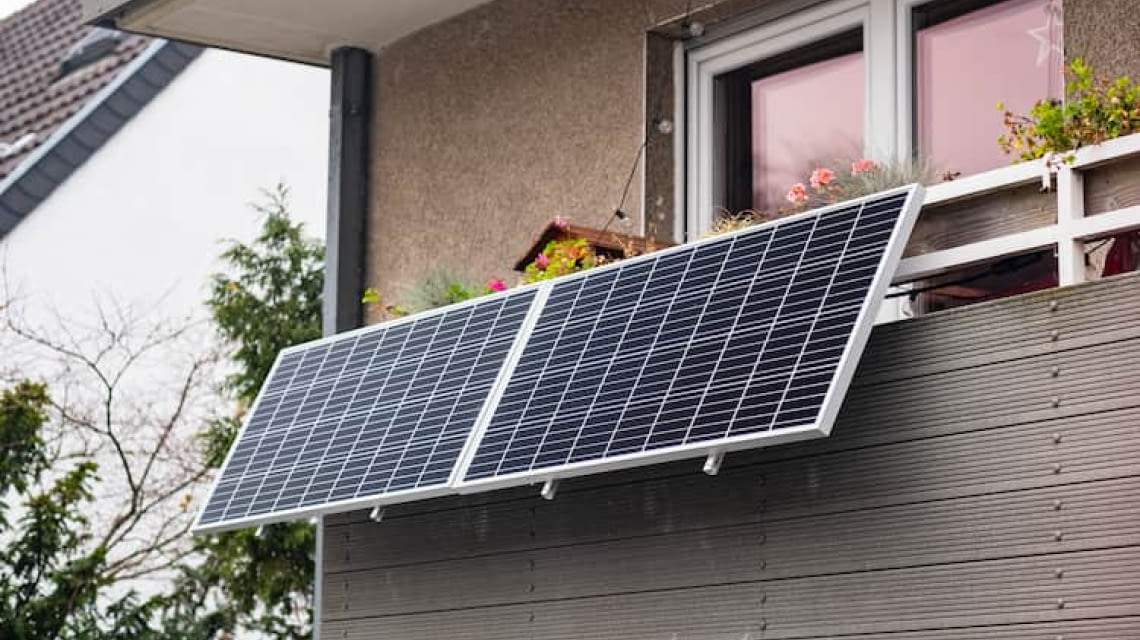
German solar power is rapidly growing, capturing an increasing share of Germany’s electrical needs. Cloudy Germany is the world leader in photovoltaic panel production and installation. The Japanese nuclear crises forces Germany to reconsider its nuclear power position. When will balkonkraftwerk 600w komplettset be ready to replace Germany’s nuclear portion of sustainable energy?
Since 2000, the German solar power capacity compound annual growth is nearly 63%. The Federal Ministry for Environment, Nature, Conservation, and Nuclear Safety estimates solar achieved 2% of Germany’s electrical needs in 2010. Even in the midst of a major economic downturn, German solar capacity achieved a 33% CAGR. Fueling German solar energy growth is a one billion Euro monthly tax incentive for individuals and companies. This Feed-In Tariff is part of the German Renewal Energy Act, the cost shared by all rate payers.
Solar power capacity growth is coming from individuals and companies. In an article by Anna Hart in the Solar Energy Connection, individual Germans installed 10,000 panels in 2003. The total doubled in 2004 and sizably grew since. German solar power plants, or solar parks, are the biggest investment. These massive fields of photovoltaic panels, or PV’s, provide peak power between 2 and 50 megawatts. Finsterwalde Solar Park, near the Polish border, is the world’s largest solar power plant with peak power of 80.1 megawatts.
German enthusiasm for sustainability and solar creates problems. A report by the government’s energy agency warns that solar growth pressures the aging German electrical grid. A weekend of sunshine potentially can overload the system. Worldwatch Institution projects Germany as the world’s largest manufacturer and installer of PV’s. Germany’s Q-Cells overcame Japan’s Sharp, as the world’s largest producer of PV’s. This fast-growing industry employs 40,000 Germans. German society is enthusiastic about sustainability. They lead the world in PV technology, productions, and growth. Will solar power increase fast enough to replace German nuclear power? Given the Japanese nuclear disaster, the pressure is on to shorten the Deutsche atomic timeline.
While German solar power is rapidly growing, as is the country’s projected gross national product. The government’s solar power estimate is 66 gig watts, or 66 million kilowatts, by 2030, a growing spark on the electrical grid. The most optimistic estimate by Solar Energy Connection is a 25% solar share by 2050. The challenge: nuclear power is 25% of current German electrical sourcing. A 2009 government decision postponed the shutdown of the 17 German nuclear power plants until 2022.
Given the crisis in Japan, German anti-nuclear protests grow. Based on the Japanese crisis and political pressure, the government temporarily shut-down several of the reactors for safety inspections. Should the opposition threaten the current government, German nuclear power years will likely shrink. While wind power and solar power energy are major government investments, neither are ready to supplant nuclear in the near term.
Deutsche Welle estimates 26 German coal-fired power plants are under construction or in planning. Increasing ferrous fuel capacity flies in the face of European Union and German goals to reduce carbon output. More gas and oil power generation is an option, but these fuels places Germany more dependent on Russia. After over a half century of tension no one is comfortable with Moscow’s hand on the faucet. There are no easy choices for Germany. They must simultaneously juggle a desire to grow; a passion to reduce carbon output; and the priority of keeping their citizens safe. We only hope the sun shines on these decisions, and Germany’s solar power panels.